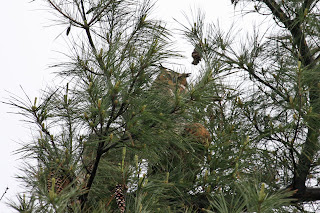World Bird Sanctuary volunteers come to us in all ages, shapes, sizes, and with a multitude of backgrounds, talents, and interests.
"Junior" - an Ornate Box Turtle
Recently Livvy Jones, who is a college Senior at Washington University and one of the multi-talented volunteers at the World Bird Sanctuary, invited the World Bird Sanctuary staff to her College Senior Art Gallery Exhibit.
I have seen firsthand Livvy's passion for conservation and the environment. We do not currently have any turtles on display at the Nature Center, but I’ve noticed that Livvy seems to be exceptionally fond of handling Rustle, our Nine-banded Armadillo. She would hold him, sometimes for a half hour at a time, to accustom him to being handled, and I would see her frequently observing our Russian Tortoise which is kept in one of our behind the scenes areas. However, I had only recently learned of her fascination for Box Turtles.
My coworker and friend, Sara Oliver, and I decided to attend the exhibit located at the Des Lee Gallery, 1627 Washington Ave#804, in downtown St.Louis, Missouri. When we arrived Washington Avenue was alive with eateries, music and dog walkers. It was so nice to see Downtown St. Louis hopping!
"Winston" - a Three Toed Box Turtle
With Box Turtles on our minds we headed into the gallery to see Livvy's artwork. She was one of six artists displaying their work. Livvy’s focus was on the land loving Box Turtle--specifically the turtles she photographed in her home state of Oklahoma. Livvy said she photographed most of the turtles on her farm in Pauls Valley, Oklahoma. Livvy's Mom told me that as a child Livvy urged her to stop for every turtle she saw. This sounded like a great way to see the differences of all the Box Turtles on her property. Oklahoma has two species of Box Turtle...the Ornate Box Turtle and the Three-toed Box Turtle.
"Claire" - a Three Toed Box Turtle
The gallery exhibits were well attended, I'm guessing that there were 200 people at any time in amongst the artwork. Livvy had the first exhibit on the right as we entered. It was well lit, with nice vibrant colors, and we were greeted by Livvy as some other guests strolled away. Wearing a fabulous dress and looking very elegant, Livvy was the only part of her exhibit that wasn't looking like a turtle. She introduced us to her parents who made the migration from Oklahoma to St. Louis at a very early hour. Livvy had 11 pieces total on exhibit--7 paintings, a jewelry box designed, painted, and shaped like a turtle, and 2 hand painted chairs with the Ornate Box Turtle color pattern. One of my favorite pieces was the tablecloth designed like a Box Turtle’s shell. I envy people with such talent.
A tablecloth intricately stitched to resemble a Box Turtle shell
The gallery this day was vibrant, with the energy of the college aged crowd viewing the artwork and sampling the attractive food table replete with grapes...you gotta have the grapes. Livvy was a most gracious host as she greeted everyone. She even made Chocolate Turtles for her guests to sample. Sara and I arrived too late to sample the chocolate turtles, but understood due to the hungry college types abounding. Livvys' Mom observed one college-age looking girl make three laps around the gallery, each time discreetly extracting a chocolate turtle as she went by. We all laughed...imagining this hungry chocolate lover circling the gallery.
I asked Livvy to describe her passion for the Turtles. The first two times I asked I received no response. I guessed it was too personal or too big to sum up. It is part of her soul. I thought about myself and my love of wild birds. Yes it is all consuming and too big to put in a few words. How does one sum up their life's passion? Later on I was able to get Livvy to give me an abbreviated summary. She says she "likes to paint animals because she wants to have them or own them. You can't own them"...so she "makes objects that are OWNABLE". She then laughed and said "you’re not going to write that?" I said "that is an interesting word (OWNABLE)." She also referred me to her recent creation of her website: LivvyJones.com.
Recently as the Meramec River flooded and reached its crest at 27 feet, the road under Highway 44 at Hwy 141 flooded. It got me to wondering about Box Turtles? ...What do Box Turtles do when the waters rise? Or do they even go that low in the flood plain? They are mostly terrestrial. Do they float to the top and swim away?
Livvy has a mindset for conservation. She volunteers with us, she is considering becoming a veterinarian, and she may donate one of her pieces of art to the Turtle Survival Alliance turtlesurvival.com.
What an enjoyable evening spent with Sara, Livvy, her parents, and Livvy’s Turtle Art. My favorite image was "Winston" the long orange throated turtle. Sara's favorite was Claire, I believe.
Livvy's exhibit title was "Talking Rather Than Screaming." It’s a real joy to see this young woman’s commitment to conservation through her artwork.
The next time you visit the World Bird Sanctuary Nature Center if you see a young lady walking around holding an Armadillo or a very large Russian Tortoise, chances are it’s volunteer Livvy Jones.
Submitted by Michael Zeloski, World Bird Sanctuary Naturalist

















































